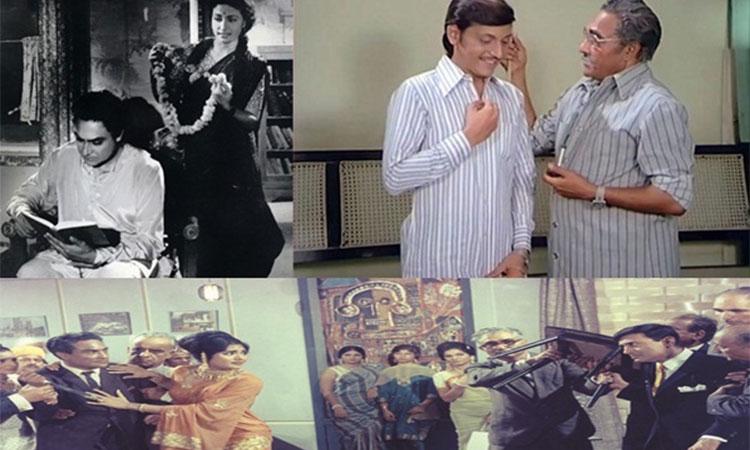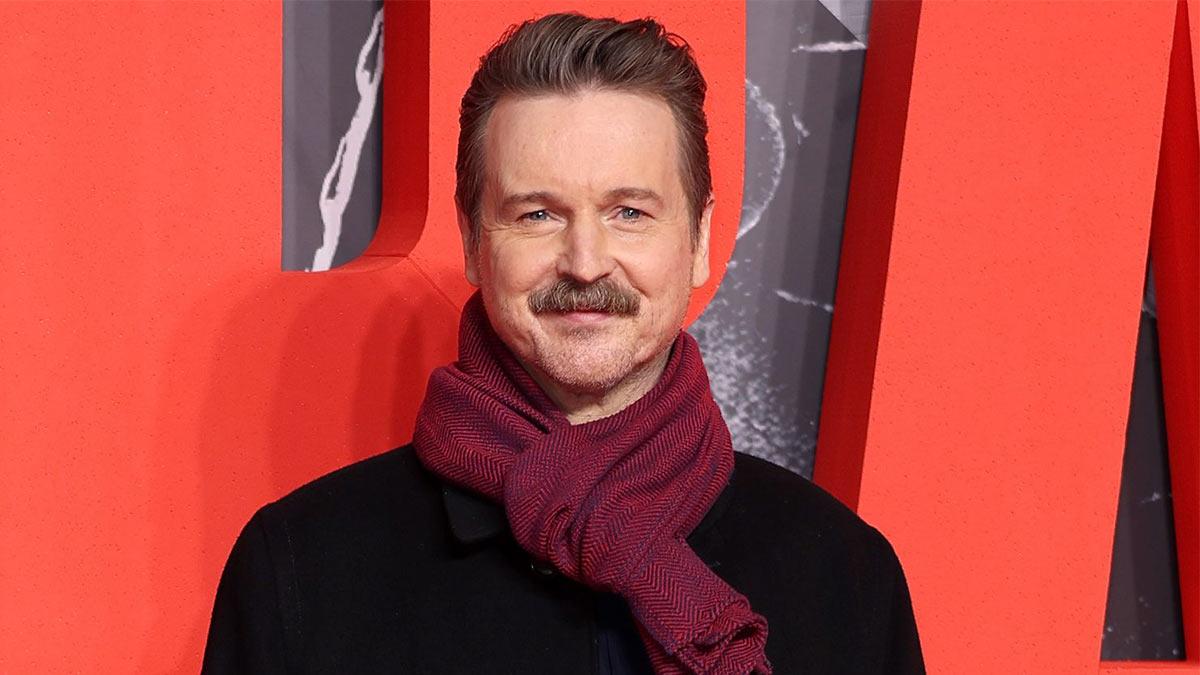From a family of prominent lawyers, he was expected to follow in their footsteps, but instead chose a career in the fledgling Hindi film industry -- and uncharacteristically, not as a hero. Virtually dragooned by his legendary boss taking over a lead role, despite the director's opposition, he, in his first-ever take, muffed up a simple scene with the heroine, and then, left the villain with a fractured leg.
That, in 1936, was the rather farcical start of the career of Ashok Kumar, who was born on this day in 1911.
Undaunted, he went on to establish himself not only as Hindi cinema's first superstar as the 1940s began, but also one who was known for his air of naturalness and his willingness to reinvent himself and experiment with playing morally ambiguous or anti-hero roles.
At the appropriate time, he moved on to playing more mature roles in line with his age, and then a wide gamut of supporting roles -- without ever getting typecast. He, then, went on to become a TV superstar in the 1980s -- even as a narrator.
Most of those who grew up in the 1970-80s may remember Ashok Kumar, affectionately known as 'Dadamoni' ('jewel of an elder brother' in Bangla), in roles of an affable elderly man -- who could later turn out not to be as benign as he appeared. He was capable of infinite variations, his oeuvre spanning romantic love, ghost tales, courtroom dramas, family sagas, 'Muslim socials', thrillers, crime capers, lost-and-found, and even, 'dirty' stories.
Also read | When Tanuja choreographed her song 'Raat Akeli Hain'
In his over six-decade-long career, which lasted nearly till the dawn of the 21st century -- and a few years before his death in 2001 -- and saw him in 340-odd films and TV serials, he, apart from the usual romantic hero, played roles as varied as sons dutiful or debauched, the second and the last Mughal emperors, a monk who falls in love with a courtesan, a conman sadhu, a zamindar who takes up arms against social injustice, an idealistic doctor who ends up killing a molester, an understanding husband who gently and effectively steers his wife out of an adulterous liaison, a committed elderly freedom fighter, and a retired soldier and all-round problem solver at whose home a scruffy-looking Amitabh Bachchan drops in for tax advice.
Ashok Kumar was also responsible for the first-ever Hindi horror film, some crime noir classics, as well as a 1950 spy thriller that incorporates Netaji's Indian National Army. He produced the first film starring Raj Kapoor, gave a break to notable actors such as Dev Anand, Pran, and Madhubala, and raised singers Lata Mangeshkar and (his youngest brother) Kishore Kumar, and filmmakers Hrishikesh Mukherjee, B.R. Chopra and Shakti Samanta to prominence.
He was key in convincing S.D. Burman to stay on in the Hindi film industry -- after a couple of flops; was instrumental in getting Bimal Roy to shift to Bombay; and drew in talented writers such as Saadat Hasan Manto, Ismat Chughtai, Saradindu Bandhopadhyay, Premendra Mitra, and Nabendu Ghosh (later his biographer) into the industry.
And for good measure, he is also credited with introducing rap to the world, with the song "Rail Gaadi" in "Aashirwad" (1968), and made offbeat pictures such as "Bada Kabutar" (1973) a pleasure to watch.
Ashok Kumar was as versatile in his life as in his films -- he was an accomplished painter, chess player (he picked up the habit from close friend, character actor and 'honorary policeman' Iftekhar, and read books on the game to the extent that he began winning), astrologer, limerick composer, fluent in eight languages, and an authorised practitioner of homeopathy, who is said to have cured a teenage girl facing amputation of a leg because of gangrene.
Born in Bhagalpur, in what was then the Bengal Presidency, and now in Bihar, Kumudlal Ganguly, as he was named, was always interested in films from when his mother took him to see 'bioscope' performances when he was young. After completing his B.Sc but failing to get the first division, he enrolled into law classes in Calcutta -- with his father, whose law school hostel roommate was the future President Rajendra Prasad, seeing visions of him rising to become a judge, but he was least interested in the profession.
In his second year, in 1934, he used the money he had to pay his exam fee for a ticket to Bombay, where his brother-in-law Sasadhar Mukherjee was a sound technician at the pioneering Bombay Talkies, run by Himanshu Rai and Devika Rani.
Initially, he wanted Rai's letter of introduction to go and work at the German motion picture production company UFA, but Rai, who detected his potential, convinced him to stay and work with him, saying it would be better.
Initially, he worked as a laboratory technician and film editor, but in 1936, when the male lead of "Jeevan Naiya", Najm-ul-Hassan, went missing, Rai observed him smoking outside and virtually ordered him to take over as the hero. The directive left Ganguly petrified and the director, a German named Franz Osten, unhappy. But, Ganguly, rechristened Ashok Kumar, as was the practice to avoid any caste or regional connotations, complied, the blunders of the first day notwithstanding.
Also read | Big B's abiding imprints on our collective musical memories
It was "Achyut Kanya" (1938), also helmed by Osten, with its then revolutionary story of an inter-caste romance, that established Ashok Kumar's reputation, and "Kismet" (1943), where he played an anti-hero, became Hindi cinema's first blockbuster hit. And, as the cliche goes, there was no looking back.
In the course of the next four decades, he went on to play a glorious series of roles, big and small -- the haunted man in "Mahal" (1948); the spoilt rich brat in "Sangram" (1950), where his gunfight with the police led the then Bombay Home Minister Morarji Desai to threaten him with arrest; the disappointed lover of "Chalti Ka Naam Gaadi" (1958); the businessman on a mission in "Howrah Bridge" (1958); the judge in the terse, songless court drama "Kanoon" (1960); and the nawab in films such as "Dharmputra" (1961), "Bahu Begum" (1967) and "Pakeezah" (1971).
Then, he was also the surprise villain in "Jewel Thief" (1967), the elderly conman (with Pran) in "Victoria 203" (1972), the occasionally ribald public prosecutor in murder mystery "Dhund" (1973), the flamboyant, billiard-playing, pipe-smoking 'love guru' Colonel Julius Nagendranath Wilfred Singh in the Amol Palekar-starrer "Chhoti Si Baat" (1976), and the naughty old man in "Shaukeen" (1982). The list is endless.


















